Amazing Plants To Pair With Lavender
Amazing Plants to Pair With Lavender
Lavender is a popular herb that is known for its beautiful purple flowers and calming scent. It is often grown in gardens and used in aromatherapy and essential oils. But did you know that lavender can also be grown alongside other plants to create a beautiful and beneficial landscape?
In this blog post, we will discuss some of the best plants to pair with lavender. We will also discuss the benefits of companion planting and how to choose the right plants for your garden.
Benefits of Companion Planting
Companion planting is a gardening technique that involves planting different types of plants together in order to create a mutually beneficial relationship. When plants are chosen carefully, they can help each other to thrive by providing shade, nutrients, pest control, and other benefits.
Lavender is a great candidate for companion planting because it has many beneficial qualities. For example, lavender:
- Repels pests such as mosquitoes, flies, and moths.
- Attracts pollinators such as bees and butterflies.
- Improves the drainage of soil.
- Helps to suppress weeds.
Plants That Pair Well With Lavender
There are many different plants that can be paired with lavender. Some of the best options include:
- Roses: Roses and lavender are a classic pairing that looks beautiful in any garden. Roses need full sun and well-drained soil, just like lavender. They also both attract pollinators, so planting them together can help to create a thriving ecosystem in your garden.
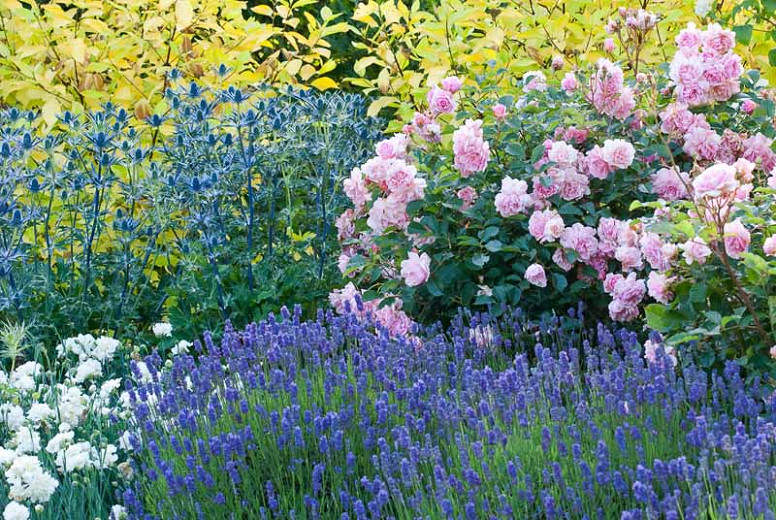
- Echinacea: Echinacea is another sun-loving plant that pairs well with lavender. It has beautiful purple flowers that bloom in the summer and fall. Echinacea is also known for its medicinal properties, so planting it alongside lavender can add a touch of health and wellness to your garden.
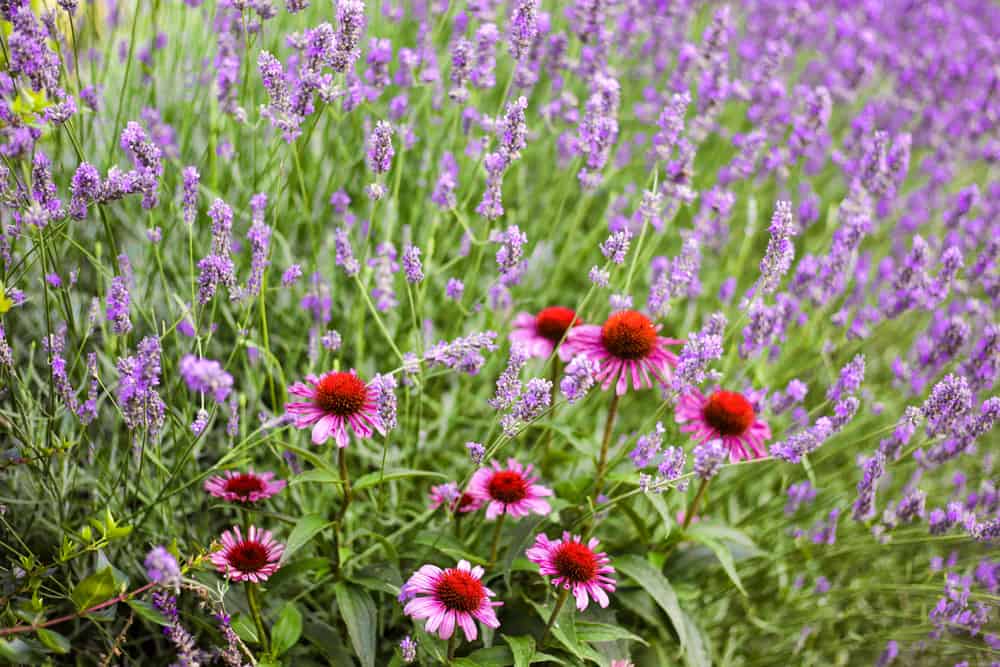
- Yarrow: Yarrow is a hardy perennial that can tolerate a wide range of conditions. It has white, pink, or yellow flowers that bloom in the summer. Yarrow is also a good choice for attracting pollinators.

- Catmint: Catmint is a low-maintenance plant that is known for its blue flowers and minty scent. It can tolerate full sun or partial shade and is drought-tolerant. Catmint is also a good choice for attracting pollinators.
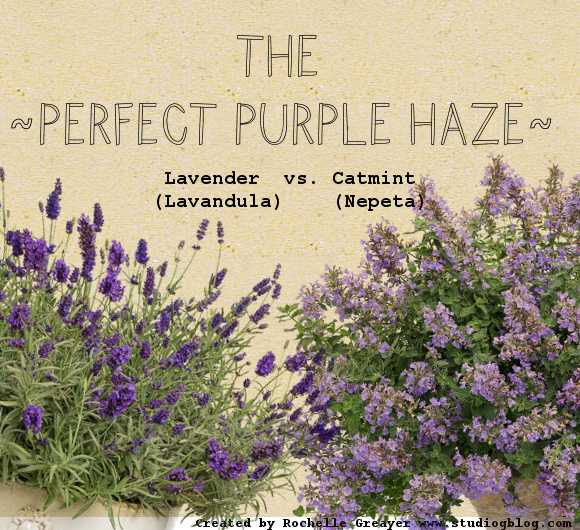
- Alliums: Alliums are a group of plants that includes onions, garlic, and chives. They have tall, colorful blooms that look great in the garden. Alliums also repel pests and attract pollinators.

- Sage: Sage is a herb that is known for its culinary and medicinal properties. It has gray-green leaves and purple flowers. Sage is a good choice for planting in full sun or partial shade. It is also drought-tolerant and can help to improve the drainage of soil.

- Thyme: Thyme is another herb that pairs well with lavender. It has small, gray-green leaves and white, pink, or purple flowers. Thyme is a good choice for planting in full sun or partial shade. It is also drought-tolerant and can help to repel pests.

How to Choose the Right Plants for Your Garden
When choosing plants to pair with lavender, there are a few things to keep in mind:
- Sunlight: Lavender needs full sun, so choose other plants that also prefer full sun.
- Soil: Lavender prefers well-drained soil, so choose other plants that have similar soil requirements.
- Pests and diseases: Consider the pests and diseases that are common in your area and choose plants that are resistant to those pests and diseases.
- Bloom time: If you want your garden to be in bloom all season long, choose plants that have different bloom times.
Conclusion
Lavender is a beautiful and versatile plant that can be grown in a variety of settings. By pairing it with other complementary plants, you can create a stunning and beneficial landscape that will attract pollinators, repel pests, and improve the overall health of your garden.
So next time you're planning your garden, don't forget to consider lavender and its many companion plants. With a little planning, you can create a beautiful and productive garden that will bring you joy for years to come.
Lavender is a beautiful and fragrant plant that can add a touch of elegance to any garden. But did you know that there are certain plants that can actually enhance the beauty and fragrance of lavender?
Here are a few of the best companion plants for lavender:
- Echinacea: These spiky flowers come in a variety of colors, and they complement the purple blooms of lavender perfectly. Echinacea is also a beneficial plant for pollinators, so it's a great choice for attracting bees and butterflies to your garden. Gardenia Inspiration
- Roses: Lavender and roses are a classic pairing, and for good reason. The two plants look stunning together, and they also have similar growing requirements. Roses need full sun and well-drained soil, just like lavender. Gardenia Inspiration
- Yarrow: This hardy plant is known for its daisy-like flowers and feathery foliage. Yarrow is drought-tolerant and can thrive in poor soil, making it a perfect companion plant for lavender. Gardenia Inspiration
- Sedum: These succulent plants come in a variety of shapes and sizes, and they add a touch of interest to any garden. Sedum is drought-tolerant and low-maintenance, making it a great choice for busy gardeners. Gardenia Inspiration
- Alliums: These bulbous plants produce beautiful flowers in a variety of colors, including purple, white, and yellow. Alliums are deer-resistant and attract pollinators, making them a great choice for lavender gardens. Gardenia Inspiration
For more information about plants that pair well with lavender, please visit Gardenia Inspiration. This website has a wealth of information on companion planting, including detailed profiles of individual plants.
FAQ of plants to pair with lavender
Q: What are some good plants to pair with lavender?
A: Lavender is a versatile plant that can be paired with a variety of other plants. Some of the best companion plants for lavender include:
- Roses: Lavender and roses are a classic pairing that looks stunning in any garden. Roses need full sun and well-drained soil, just like lavender. They also have similar water requirements, so you won't have to worry about overwatering or underwatering either plant.

- Echinacea: Echinacea is another great companion plant for lavender. Both plants are drought-tolerant and attract pollinators to the garden. Echinacea also comes in a variety of colors, so you can choose plants that complement the color of your lavender.

- Yarrow: Yarrow is a hardy plant that can tolerate hot, dry conditions. It also has daisy-like flowers that bloom in shades of white, yellow, and pink. Yarrow is a good choice for filling in spaces between lavender plants.

- Sage: Sage is another herb that thrives in the same conditions as lavender. It has a strong, minty aroma that deters pests. Sage also comes in a variety of colors, so you can choose plants that match the color of your lavender.

- Alliums: Alliums are a group of plants that includes onions, garlic, and chives. They have tall, showy flowers that bloom in shades of purple, white, and pink. Alliums attract pollinators and help to repel pests.

Q: What plants should I avoid planting near lavender?
A: There are a few plants that you should avoid planting near lavender. These include:
- Impatiens: Impatiens prefer moist, shady conditions, which are not ideal for lavender.
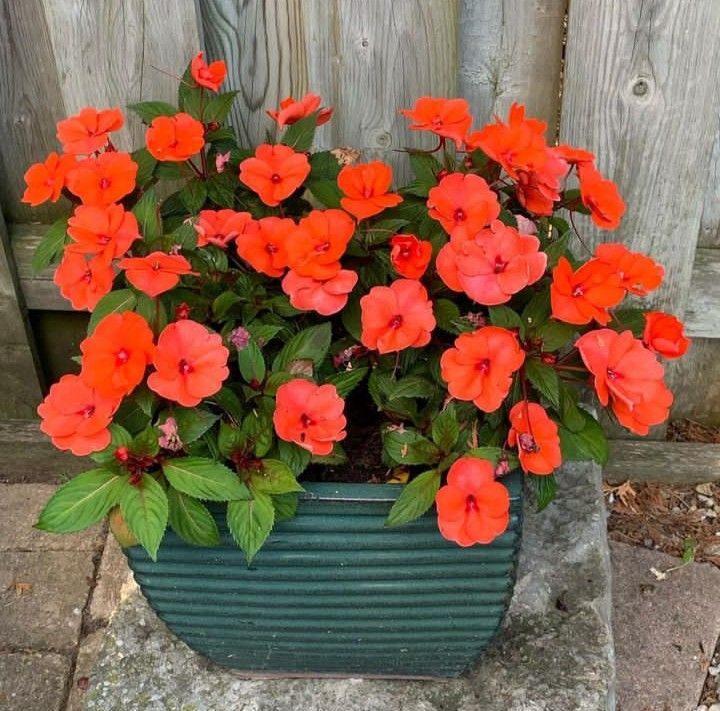
- Hostas: Hostas are also shade-loving plants that can compete with lavender for water and nutrients.
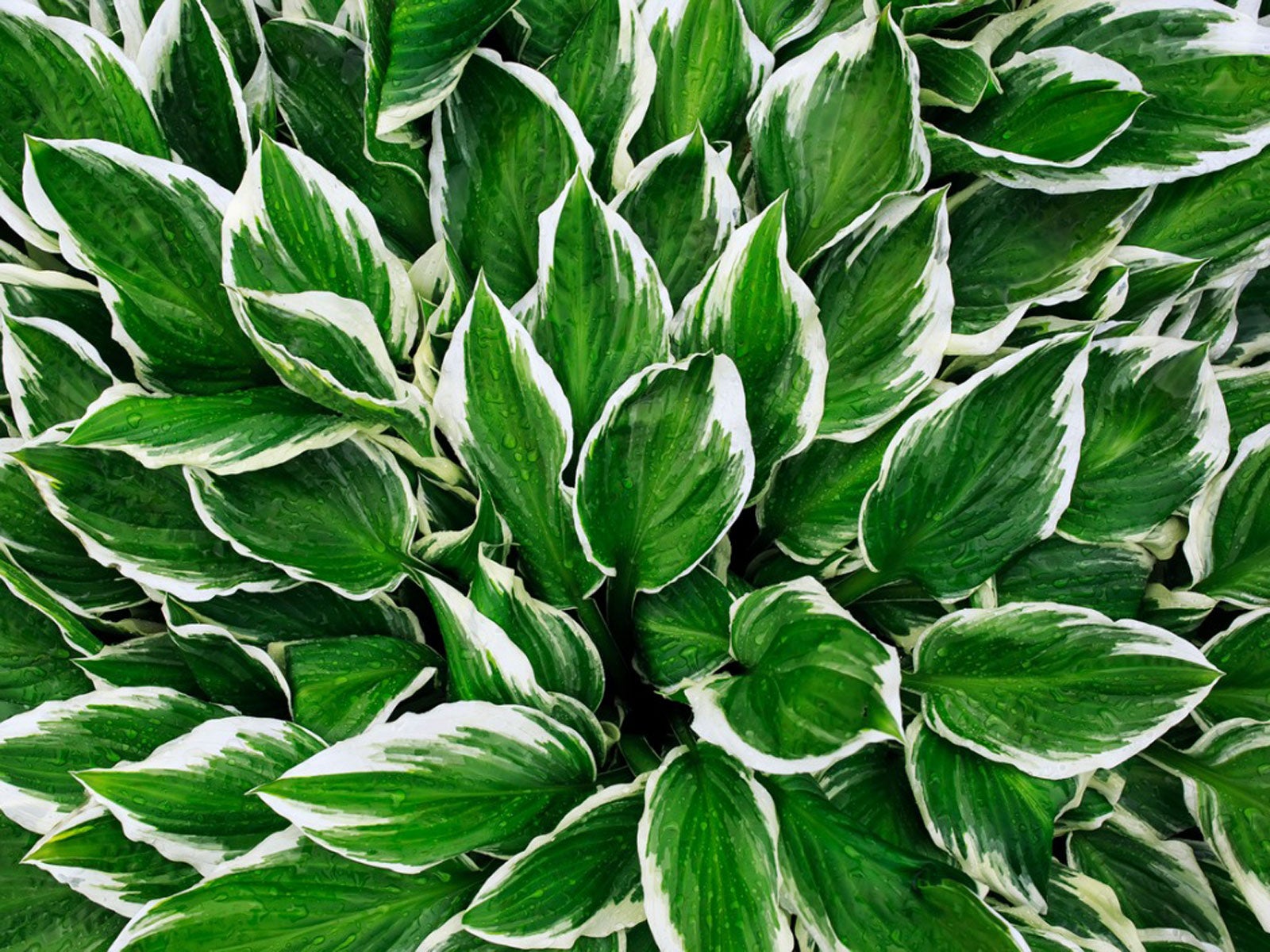
- Camellias: Camellias are another type of shade-loving plant that can be harmful to lavender.
- Fuchsias: Fuchsias are not as drought-tolerant as lavender and can drown the plant if they are not watered properly.

Q: What are the benefits of companion planting with lavender?
A: There are several benefits to companion planting with lavender. These include:
- Attracting pollinators: Lavender is a magnet for pollinators, such as bees and butterflies. These insects help to pollinate other plants in your garden, which can lead to a better harvest.
- Repelling pests: Lavender has a strong scent that deters many pests, such as mosquitoes, moths, and rabbits. This can help to keep your garden free of pests and diseases.
- Improving soil quality: Lavender can help to improve the drainage and aeration of soil. It can also add nutrients to the soil, which can benefit other plants in your garden.
- Creating a beautiful landscape: Lavender is a beautiful plant that can add color and interest to any garden. When planted with other complementary plants, it can create a stunning landscape.
Q: How far apart should I plant lavender plants?
A: The amount of space you need to plant lavender plants depends on the variety of lavender you are planting. Generally speaking, you should plant lavender plants about 1-2 feet apart. This will give them enough room to grow and spread.
Q: How do I care for lavender plants?
A: Lavender plants are relatively easy to care for. They need full sun and well-drained soil. Water them deeply once a week, but allow the soil to dry out between waterings. Lavender plants do not need to be fertilized often. A light application of fertilizer in the spring will help them to thrive.
Image of plants to pair with lavender
- Rosemary: Rosemary is a Mediterranean herb that, like lavender, loves full sun and well-drained soil. It also has a strong fragrance that can help to deter pests.

- Sage: Sage is another herb that pairs well with lavender. It has a similar color palette and can help to attract pollinators.
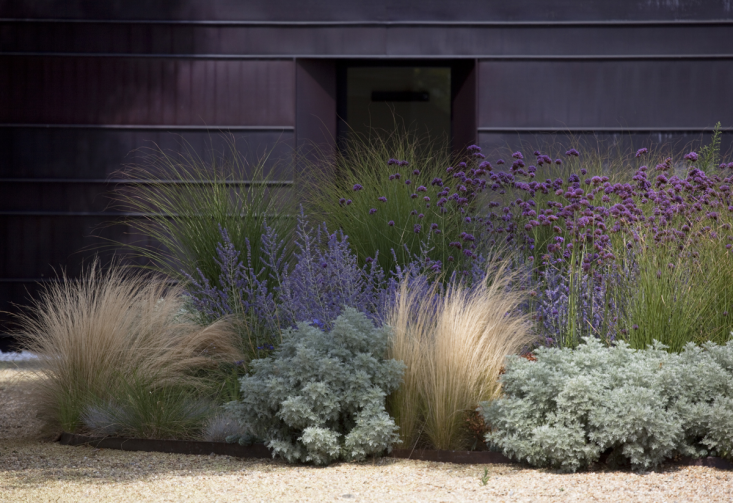
- Marigolds: Marigolds are known for their bright orange and yellow flowers, which can help to add color and contrast to a lavender planting. They also have insect-repelling properties, which can help to protect lavender from pests.

- Geraniums: Geraniums are another colorful flower that can be paired with lavender. They are also drought-tolerant and can help to add some height to a lavender planting.

- Yarrow: Yarrow is a low-growing herb that has feathery foliage and white or yellow flowers. It can help to fill in the spaces between lavender plants and attract pollinators.

Post a Comment for " Amazing Plants To Pair With Lavender"